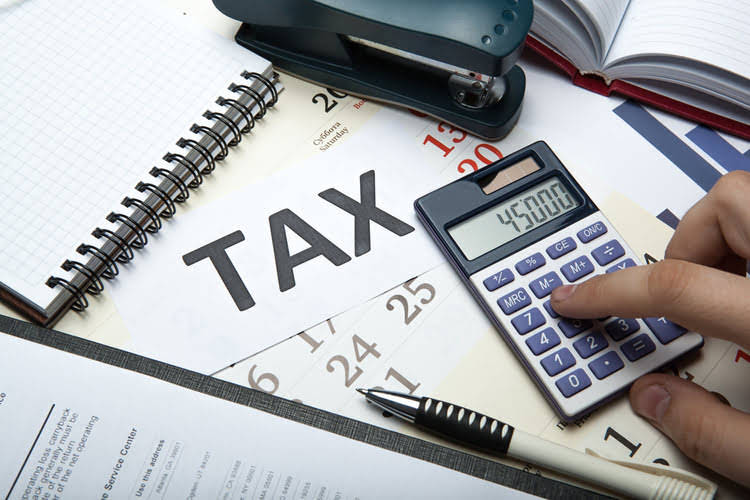
The Tax tables below include the tax rates, thresholds and allowances included in the New York Tax Calculator 2025. The Tax tables below include the tax rates, thresholds and allowances included in the New York Tax Calculator 2024. The planned reductions in state income tax rates and brackets starting in 2027 mean that many New Yorkers will see lower tax bills in the future. However, these changes are not immediate, so it’s important to plan based on the current rates for 2025 and 2026. In addition to state income tax, residents of New York City and Yonkers must pay local income taxes.
Filing Status
Qualifying tuition Certified Public Accountant expenses are defined as net of scholarships and financial aid. Tuition paid by a dependent student who is claimed on a parent’s New York return is attributed to the parent and used by the parent to claim the credit or deduction. Taxpayers must subtract the amount of household credit used to reduce tax liability from the earned income credit. In addition to the tax expenditures which are authorized in New York Tax Law, there are numerous federal flow through tax expenditure provisions which impact the New York State personal income tax.

Volunteer firefighters and ambulance workers credit
Interest, finance charges, grants, or other costs used for any other credit cannot be used in the computation of the credit. In New York, the median property tax rate is 1.26%, and the average property tax bill is $3,343, making it one of the most expensive in the U.S. New York has a graduated state individual income tax rate ranging from 4% to 10.9%. If your New York adjusted gross income, Form IT-203, line 32 is more than $107,650, you cannot use these tables. To compute your tax, see Tax computation – New York AGI of more than $107,650. If you fail to follow these instructions, you may have to pay interest and penalty if the income tax you report on your return is less than the correct amount.
IRS Issues Guidance on the Taxation of State Tax Payments Issued in 2022
- Tax laws can be intricate, and professional advice is essential for maximizing tax benefits.
- In addition to the Social Security exemption mentioned earlier, New York offers a few other tax breaks to help older residents.
- Additionally, New York City levies its own personal income tax, which ranges from 3.078% to 3.876%, depending on income levels.
- Generally, if you are required to file a Federal tax return New York will expect you to file a state return.
In New York, the standard deduction for a single earner is $8,000 ($16,050 for joint filers). This means that when calculating New York taxes, you should first subtract that amount from your income (unless you have itemized deductions of a greater amount). If you’re looking to reduce your tax bill, consider living outside the city and commuting, as many have found this to be a practical way to enjoy the benefits of NYC without the high personal income taxes. However, for those who choose to stay, understanding the tax brackets, credits, and potential deductions can help you better manage your financial obligations. In addition to the New York corporate income tax, New York corporations must also pay the federal corporate income tax. Like the personal income tax the federal business tax is bracketed based on income level, with eight corporate tax brackets.
Part-year resident status rules
If you need extra help, connect with a local TurboTax expert for professional advice or to have them file for you. New York offers a standard deduction to reduce your taxable income, with different amounts based on your filing status. The standard deduction new york income tax is a blanket amount you can use to reduce your taxable income based on your filing status. The Personal Exemption, which is not supported by the New York income tax, is an additional deduction you can take if you (and not someone else) are primarily responsible for your own living expenses. Likewise, you can take an additional dependent exemption for each qualifying dependent (like a child or family member), who you financially support.
- This tool is freely available and is designed to help you accurately estimate your 2021 tax return.
- If you are a part-year resident or nonresident of New York State, you need to file Form IT-203, Nonresident and Part-Year Resident Income Tax Return.
- As a result of this coupling of state definitions of income base to federal definitions, exclusions or deductions from income at the federal level become exclusions or deductions at the state level.
- As we dive deeper, we’ll explore how these rates are structured and provide strategies to help you minimize your tax burden while maximizing your financial health.
- For more information on reducing taxes through renewable energy tax credits, visit Veritas Tax Credits at this link.
- Active-duty pay is taxed like normal income if you are a resident of the state.
New York Standard Deductions & Personal Exemption Amounts

For more information on reducing taxes through renewable energy tax credits, visit Veritas Tax Credits at this link. If you’re looking for a tax consultant, you can also visit Veritas Tax Credits for personalized advice and guidance. For businesses and individuals involved in renewable energy tax equity deals, the tax benefits can be substantial. These deals allow investors to pool resources to fund renewable energy projects, in exchange for tax credits and accelerated depreciation.
Are You a New York State Resident?

New York has $19,407 in state and local debt per capita and has a 92 percent funded ratio of public pension plans. New York’s tax system ranks 50th overall on the 2025 State Tax Competitiveness Index. For the complete list of New York state’s tax credits, visit the New York Department of Taxation and Finance website. While these guidelines apply to most residents, specific exemptions may affect whether you need to file. TurboTax can help you navigate these rules and determine if any exceptions apply to your unique situation, ensuring you meet all filing requirements.

New York State Payroll Deductions in 2024
In conclusion, navigating the intricacies of New York State income tax is an indispensable aspect of QuickBooks ProAdvisor maintaining your financial equilibrium in the Empire state. Whether you’re a seasoned resident or a recent transplant, understanding the filing requirements, residency considerations, tax rates, and available deductions and credits is key. So if you owe $5,000 in taxes and are eligible for a tax credit of $500, you only need to pay $4,500 total. There are numerous additional tax credits offered in the state of New York, many of which primarily benefit low income households. Certain wages are also subject to what’s known as the Additional Medicare Tax. If your filing status is single, head of household or qualifying widow(er), any wages you earn in excess of $200,000 are subject to the 0.9% Medicare surtax.